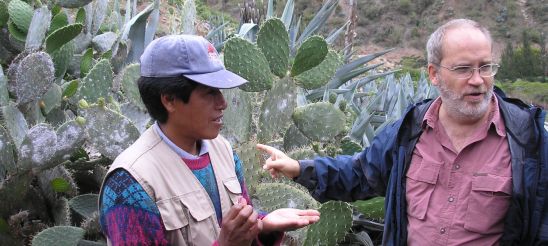We Must Cultivate Our Garden
We Must Cultivate Our Garden
By Dan Robison
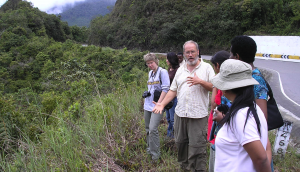
The last ten days appear to have shaken the world in general. News junkies will have been aware of COVID-19 since the beginning of the year. I made some long flights to and from in the US in late January, and I wore a face mask, even though only a couple of cases had been diagnosed in the US and none in Latin America. I was not the only one, perhaps 1 in 20 were doing it. However, the announcement of the World Health Organization on March 11 that there was an official pandemic coincided with the beginning of the drop in the stock markets worldwide. These came only a day or two after the first two positive cases were identified here in Bolivia. Bolivia announced the grounding of flights from Europe, with the last one arriving Friday the 13th in the morning.
I think that many around the world realized that “IT” had arrived. The transitional president of Bolivia announced sweeping measures that came into place on Monday, the 16th of March. With less than 10 confirmed cases nationally and no related deaths, an 18:00 to 05:00 curfew came into being. The workday was shortened from 08:00 to 13:00 and intercity and interdepartmental land travel was prohibited, with a few flights still happening between cities. Starting at midnight on the 21st of March, we went into what will be 40 days of “total lockdown”.
The last few nights (with a muted interlude for Father´s Day), my town in the Bolivian Amazon has been far quieter than it has in the 25 years I have lived here. It is occurring to many people that it will take a long time to get back to normal, and that normal may be very different from how things were two weeks ago.
Vincent Omara, Uganda – Class of 2017
Vincent Omara, Uganda – Class of 2017
Future Generations University is committed to empowering local people by giving them a voice and visibility. This is exactly what alumnus Vincent Abura is doing in his job at Gulu University in Uganda.
Cape Horn and Tierra Del Fuego: The Southern tip of South America- Part III
Cape Horn and Tierra Del Fuego: The Southern tip of South America- Part III
In the eastern division, the Argentine government has promoted development by offering substantial financial inducements to people to settle and work in this region, one that diplays relatively cold weather and long, dark winter nights. A good example of the success of the plan is Ushuaia, a settlement squeezed into space bordering the Beagle Channel. Starting with a town of only around 12,000 residents the population has now increased to a city over 60,000, and as this is a port of call, or the jumping-off site, for ships heading to and from the Southern Ocean and the Antarctic Peninsula, it is bustling with visitors in the summer months. Over 200 cruise ships dock here anually.
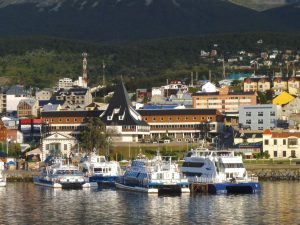
Ushuaia City on the Beagle Channel marks the southern border of the island.
These days tourism is a major economic driving force here and records show that back in 2015 over 300,000 visitors arrived on the island, the majority (55%) from Argentina. Numerous other business activities are promoted in this eastern part of the island including extracting oil and gas, as well as peat ‘mining,’ and logging. In addition, factories that produce textiles and plastics have been constructed in economic free zones while raising beef cattle is important as this region is free of hoof-and-mouth disease.
As with most mountainous tracts, foothill areas rise up on both sides of the main spine and each altitude level comes with distinct biological constituents. In the case of Tierra del Fuego the eastern foothills of the Darwin Range lie on the dry side where the lower slopes are home to a variety of herbaceous plants including beach strawberry (Fragaria chiloensis) and calafate (Berberis buxifolia), both of which were gathered by the Yaghans for food. Stands of trees grow where conditions allow, and among these is the conifer,Pilgerodendron uviferumin the cypress family, the southernmost cone-bearing plant in the world and one often found in association with subpolar beeches, Nothofagus sp., and Winter Bark,Drimys winteri, the bark used by early travelers to prevent scurvy.
Cape Horn and Tierra Del Fuego: The Southern tip of South America- PART II
Cape Horn and Tierra Del Fuego: The Southern tip of South America- PART II
By Professor Robert Fleming
Only a few island groups on our planet have remained mostly free of human impact and with good fortune, a portion of the Tierra del Fuego Archipelago, below the Beagle Channel, is one of these. Here lies the small (244km2/94mi2) Cape Horn National Park, which encompasses both shallow marine habitats along with the island groups of Wollaston and Hermite. Cape Horn Island itself is a miniscule part of the reserve.
Some of the islands below the Beagle Channel are treeless andexhibit tundra formations as well as alpine habitats, these often intermixed with freshwater ecosystems such as peat bogs that are repleat with species of Sphagnummosses. Indeed, the whole region is a bryophyte hotspot, especially well known for its great diversity of cold-adapted liverworts and mosses.
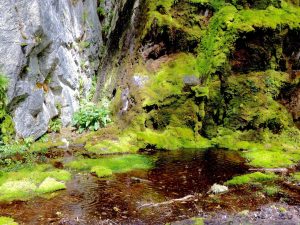
Shaded areas on islands west of the Darwin range are conducive to fern and moss growth.
In addition, other islands in the region are partly covered with a mixture of southern evergreen forests or subpolar deciduous forests. A main component of the former is the southern beech Nothfagus betuloides, and the white-flowered Drimys winteri (in the Winteraceae family). While the deciduous forests are mostly composed of the southern beeches, Nothofagus pumilioand N. antarctica.
Cape Horn and Tierra Del Fuego: The Southern tip of South America- PART I
Cape Horn and Tierra Del Fuego: The Southern tip of South America- PART I
By Professor Robert Fleming
I am the albatross that waits for you
at the end of the world.
I am the forgotten souls of dead mariners
who passed Cape Horn
from all the oceans of the earth.
But they did not die
in the furious waves.
Today they sail on my wings
toward eternity,
in the last crack
of Antarctic winds.
– Sara Vial
A world of wind, waves, and swirling spray is home to the albatrosses of the Southern Ocean, the birds a fitting symbol for the spirits of the many mariners who have perished attempting to sail around Cape Horn (Cabo de Hornos) at the tip of South America. These roiling seas hostmany oceanic birds including petrels, skuas, and shearwaters, but the primier species are albatrosses, their seemingly effortless flight beautifully adapted to the circumpolar winds that continuously blow east between 40 degrees and 60 degrees south latitude. Beneath the ocean’s surface, the Antarctic Circumpolar Current also circles east, little impeded by any land mass except where it has to squeeze through the 800km-wide Drake Passage between the Antarctic Peninsula and South America.
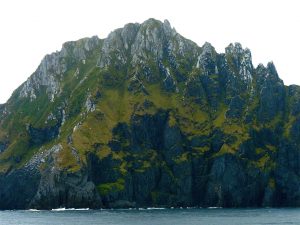
Cape Horn Island as seen when approaching from the south.
Read more…

